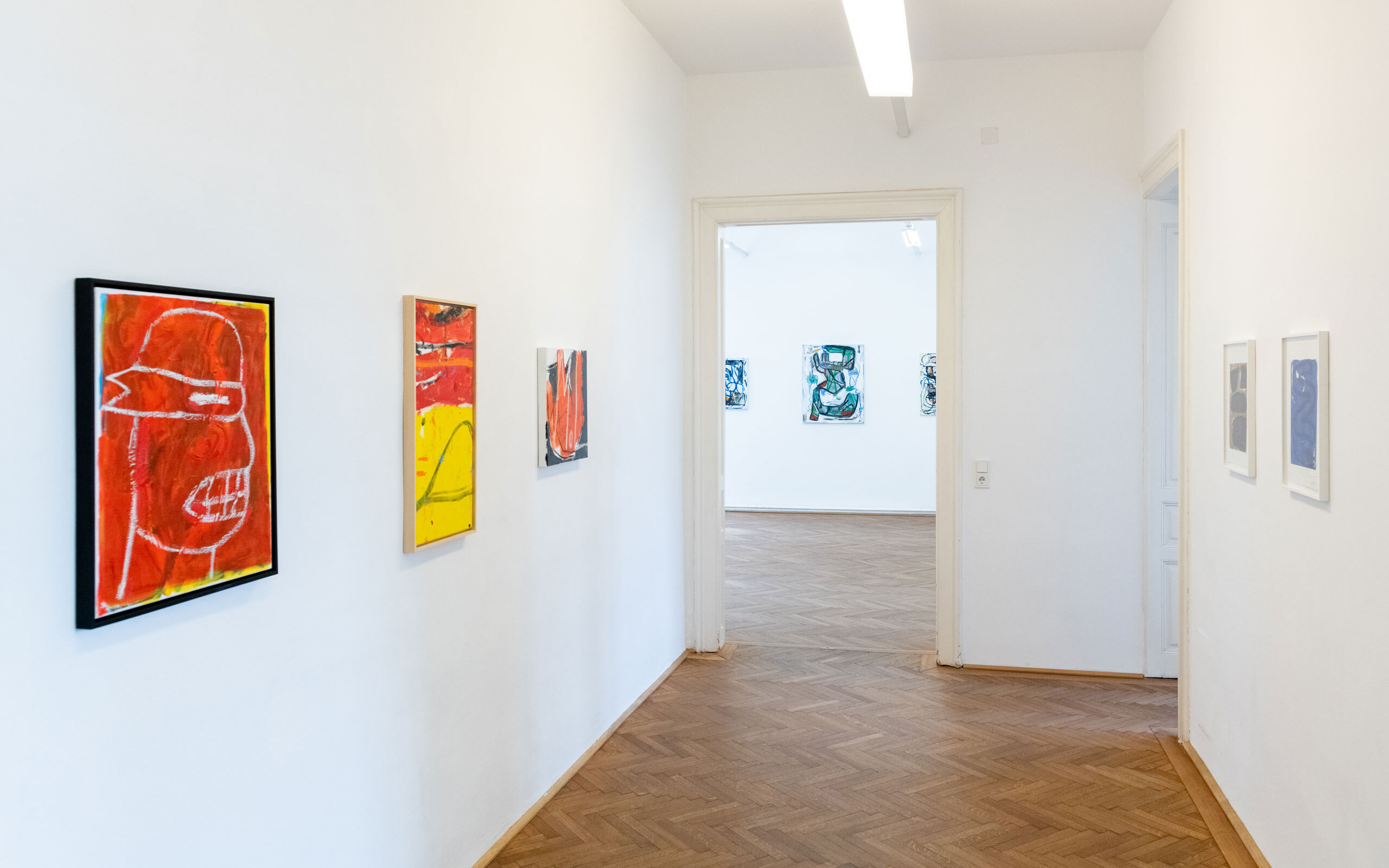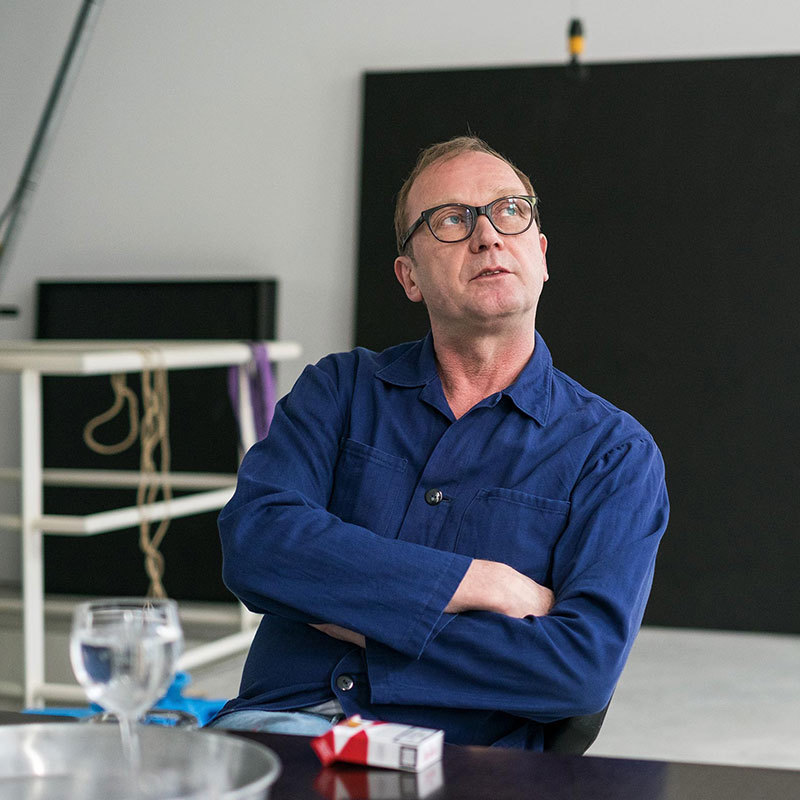Martin Lukáč
»No Escape«
13 May – 19 June, 2021
The paintings of Martin Lukáč (*1989, Slovakia) exist somewhere between a rock and a hard place and are projecting some kind of strange energy. Lukáč brings a rare ability of synthesizing two seemingly opposing tendencies in contemporary painting: Neither fully figurative nor completely abstract, his paintings are tirelessly energetic and unruly whilst radiating elegance and timelessness, resting at ease.
Repetition and excess are ever-present throughout Lukáč’s work, suggesting a long pursuit, a compulsive and exhaustive process. His work series are built upon the iteration of straightforward powerful graphic elements and abstract ideas. His repetitions wield an aesthetic charge as if to underscore the very essence of painting.
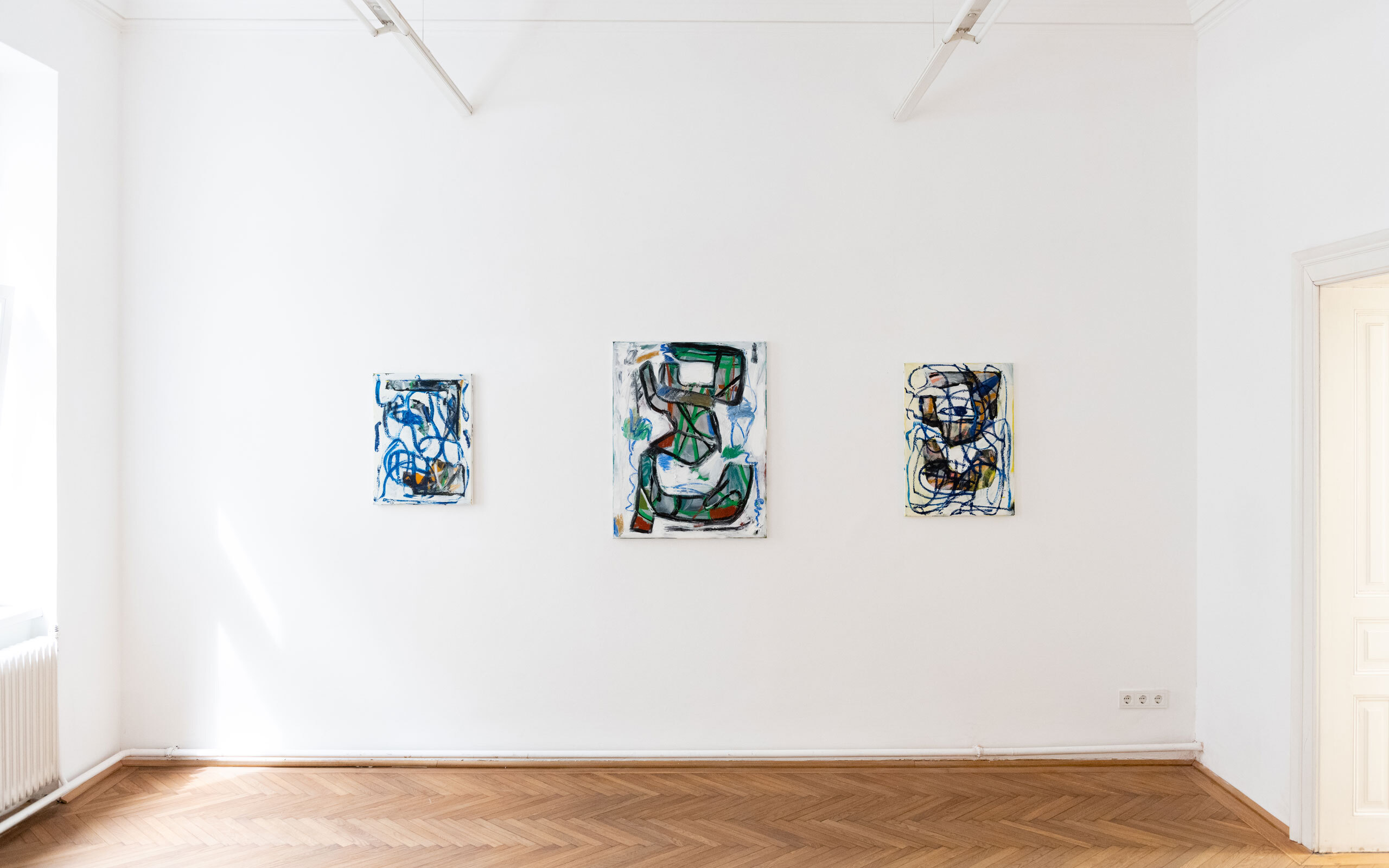
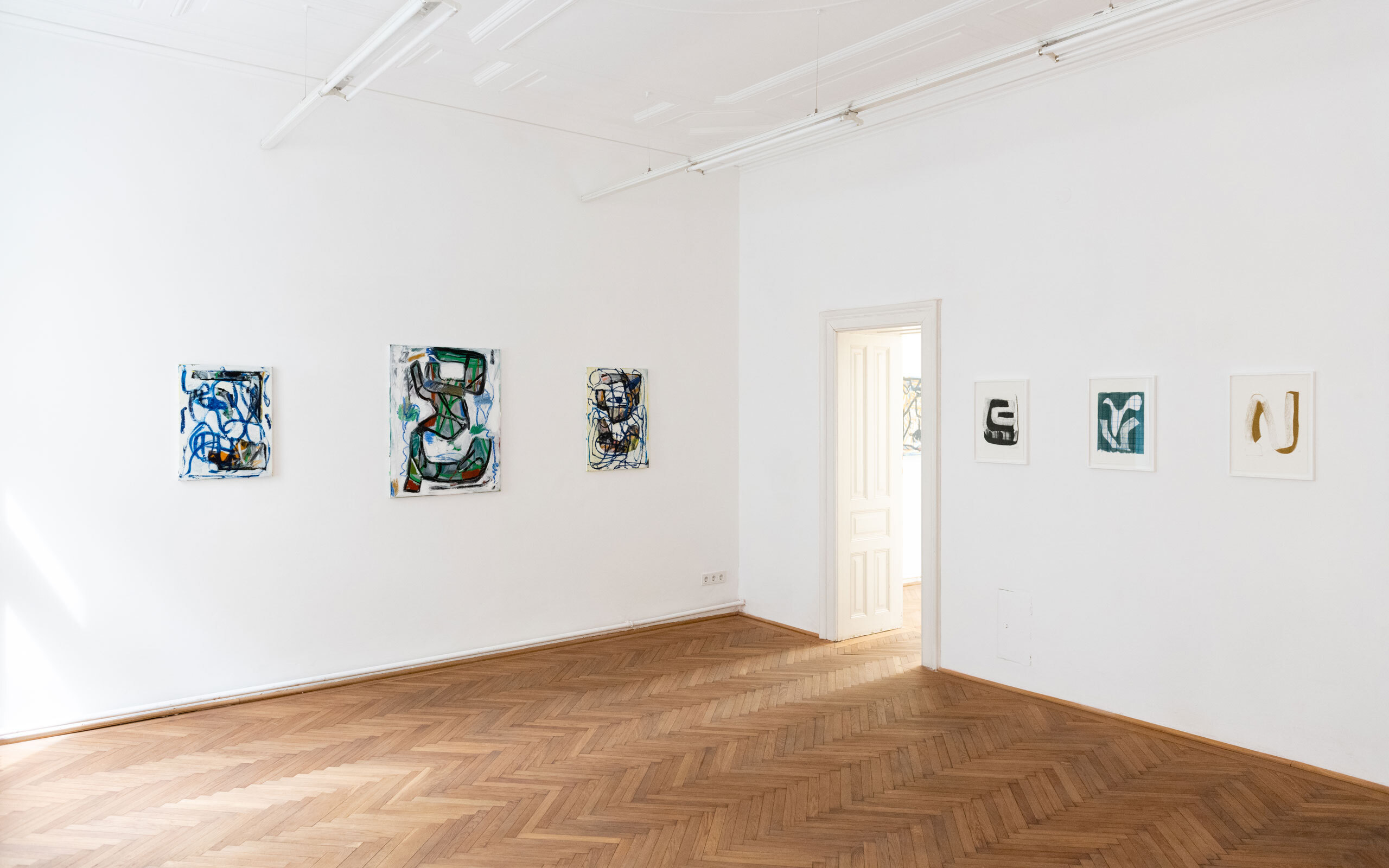
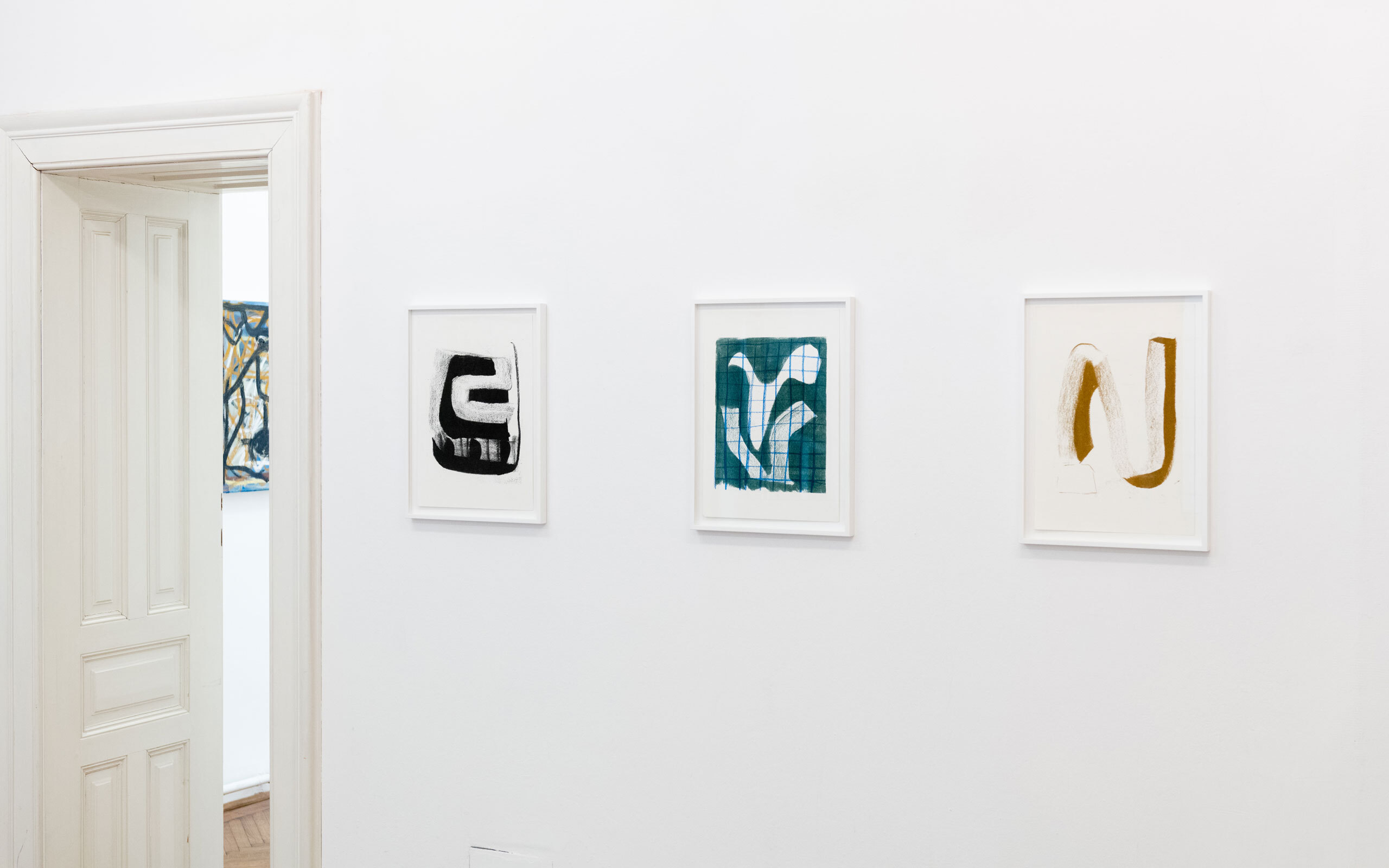
Once Lukáč identifies a motif that captures his attention, he extrapolates it from its context, repeats it multiple times, even within the borders of the same canvas, until it’s completely exhausted (or possibly not?) and in most cases ends up with vibrant expressionist abstractions that reveal the true nature of his artistic research.
More recently the artist has let in figurative features, like fictional characters and appropriations from popular culture that he paints in a deliberately oversimplified way and brutally superimposes on elaborate backgrounds — in an act which both negates and confirms the abstract quality of the works.
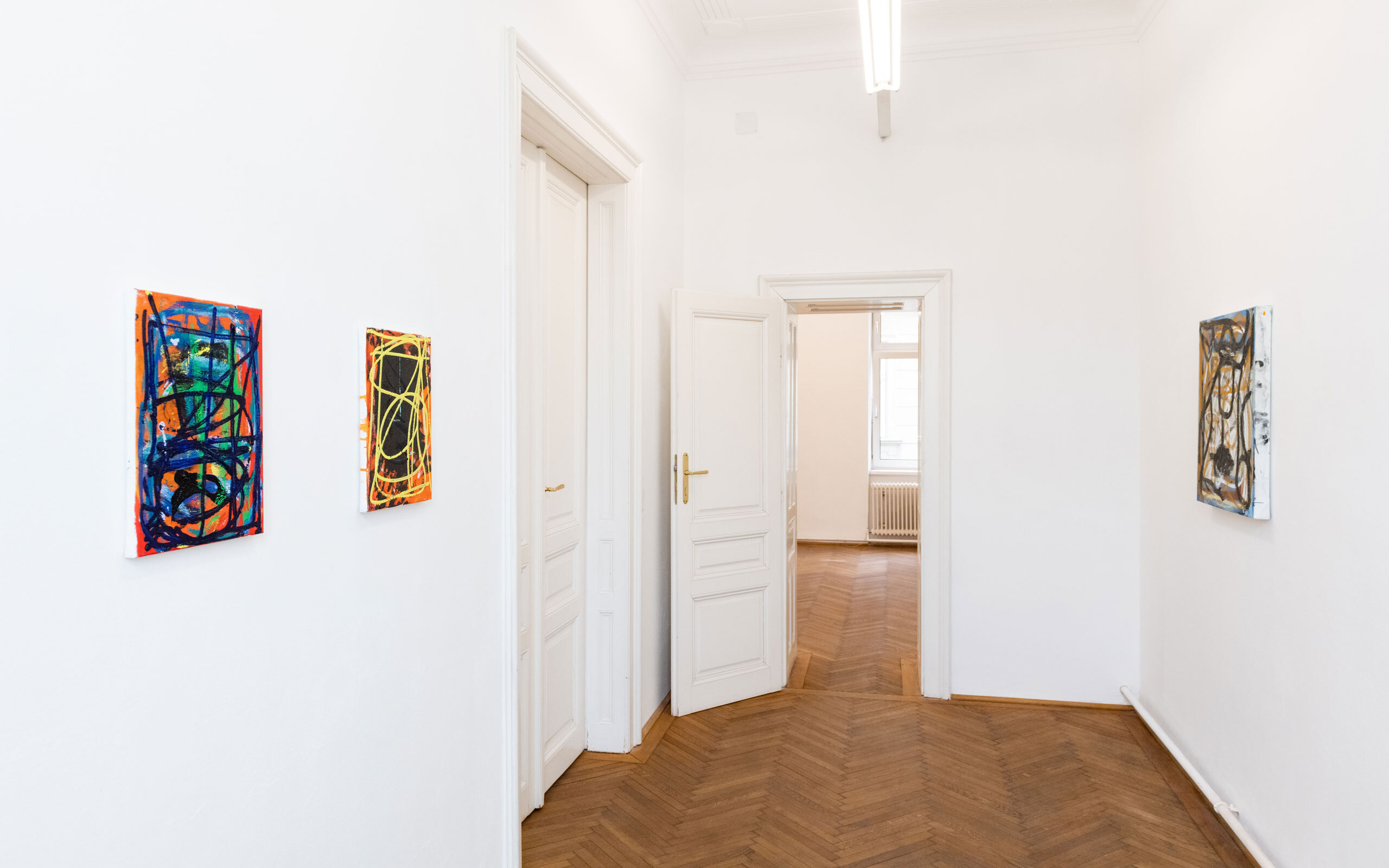
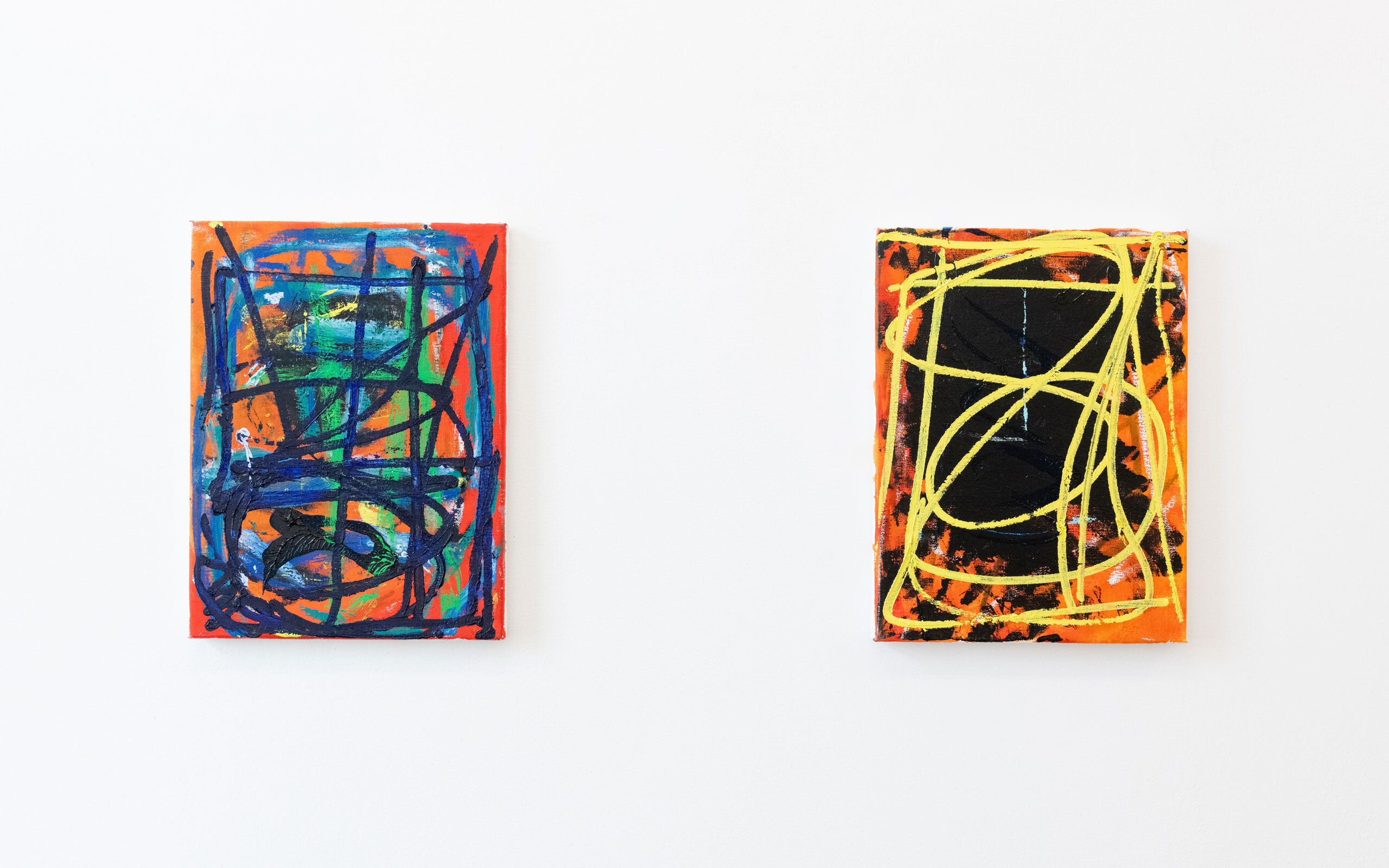
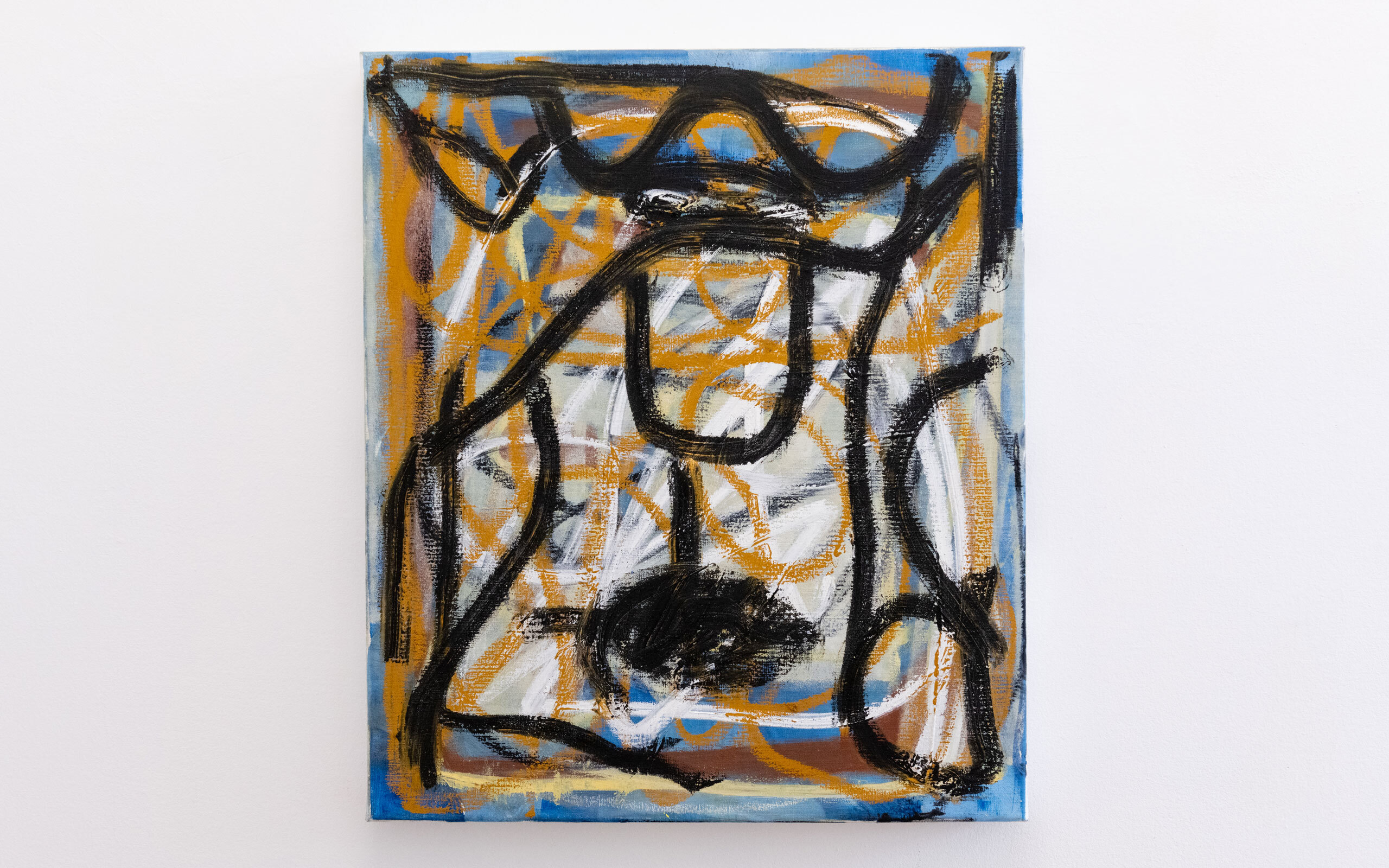
Collectors Agenda is showing selected works by Martin Lukáč created between 2015 and 2021 and describe his path from his impulsive, purely abstract expressionist paintings to his iconic figurative pop-cultural paintings, offering insights into his exploration with alternative forms of repetition
The majority of works in the exhibition find inspiration in the avant-garde and elite painting culture represented by a formal language which draws on the hundred-year history of abstract expressionist painting. These paintings seem to move between the amorphic and the moment when a form emerges and takes shape.
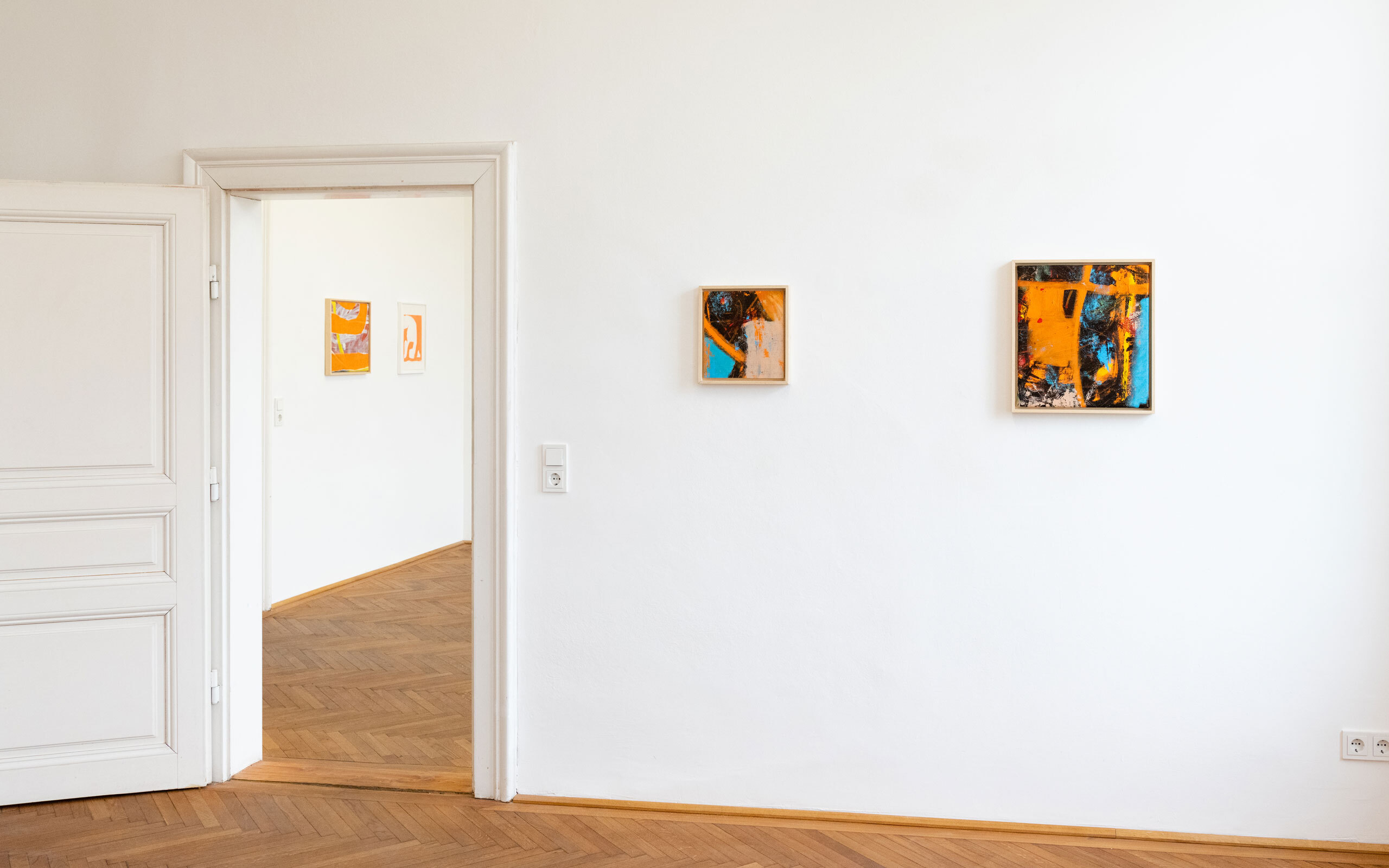
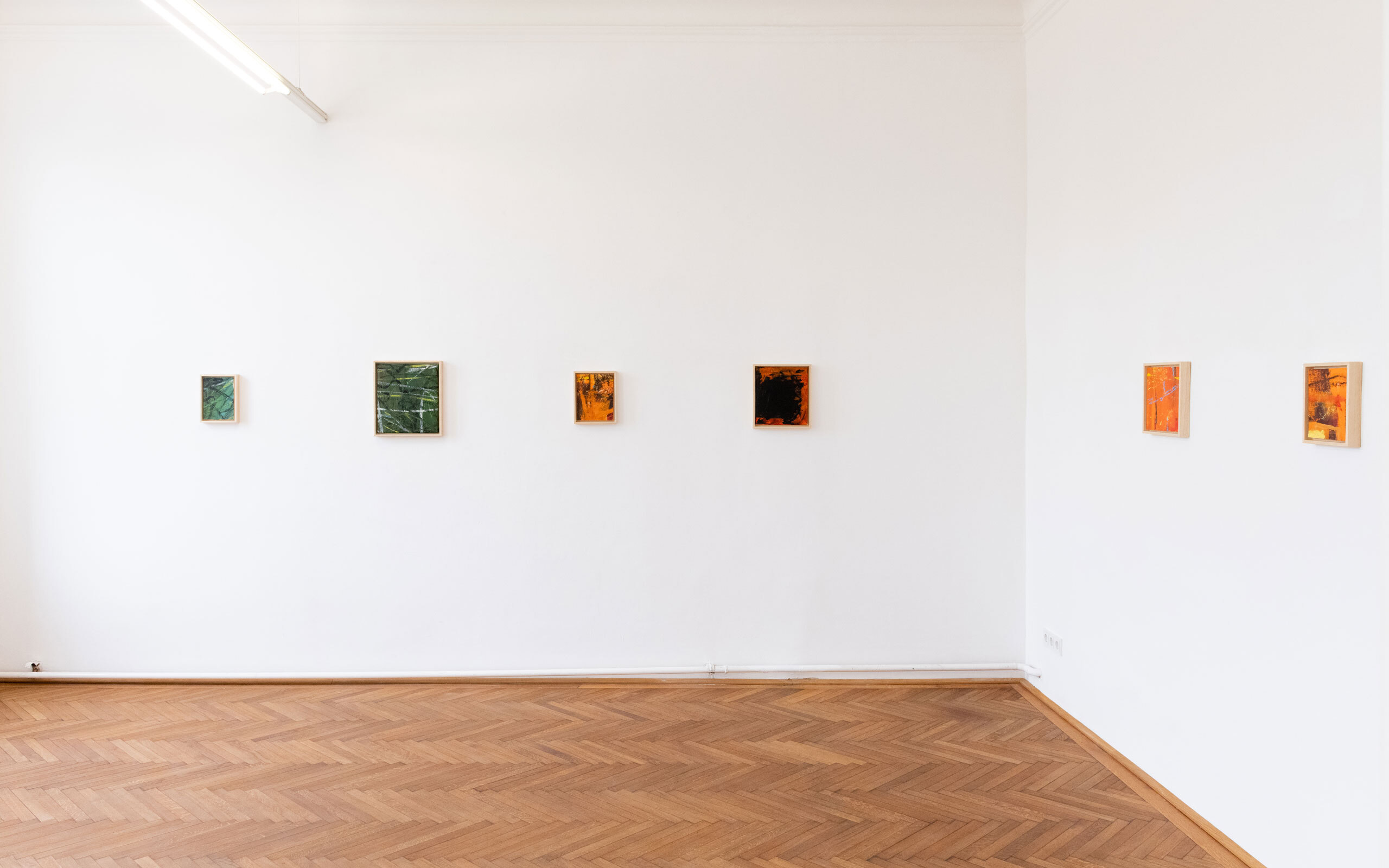
As typical of Lukáč’s practice, also the paintings exhibited here vary their motifs and explore them until they are exhausted. These motifs are often layered and schemed within a characteristic matrix of four quadrants, which surfaces as a well-known, almost emblematic motif for modernism. Lukáč’s image compositions combine various visual languages of the past, and reconfigure them for new contexts. The richness and originality of formal contexts and enclosed symbolism that the artist produces is difficult to pinpoint. Following abstract tradition they rather seem to appeal to the unconscious.
In 2014, Lukáč became interested in a serial production technique called risography. Risography is a stencil printing process carried out using the cylinder printing method in the manner of screen printing. The process was developed by the Japanese company Riso, from where the process gets its name. The method allow Lukáč to repeatedly produce simple and contrastive forms and visual motifs that he varies and re-contextualizes throughout the series.
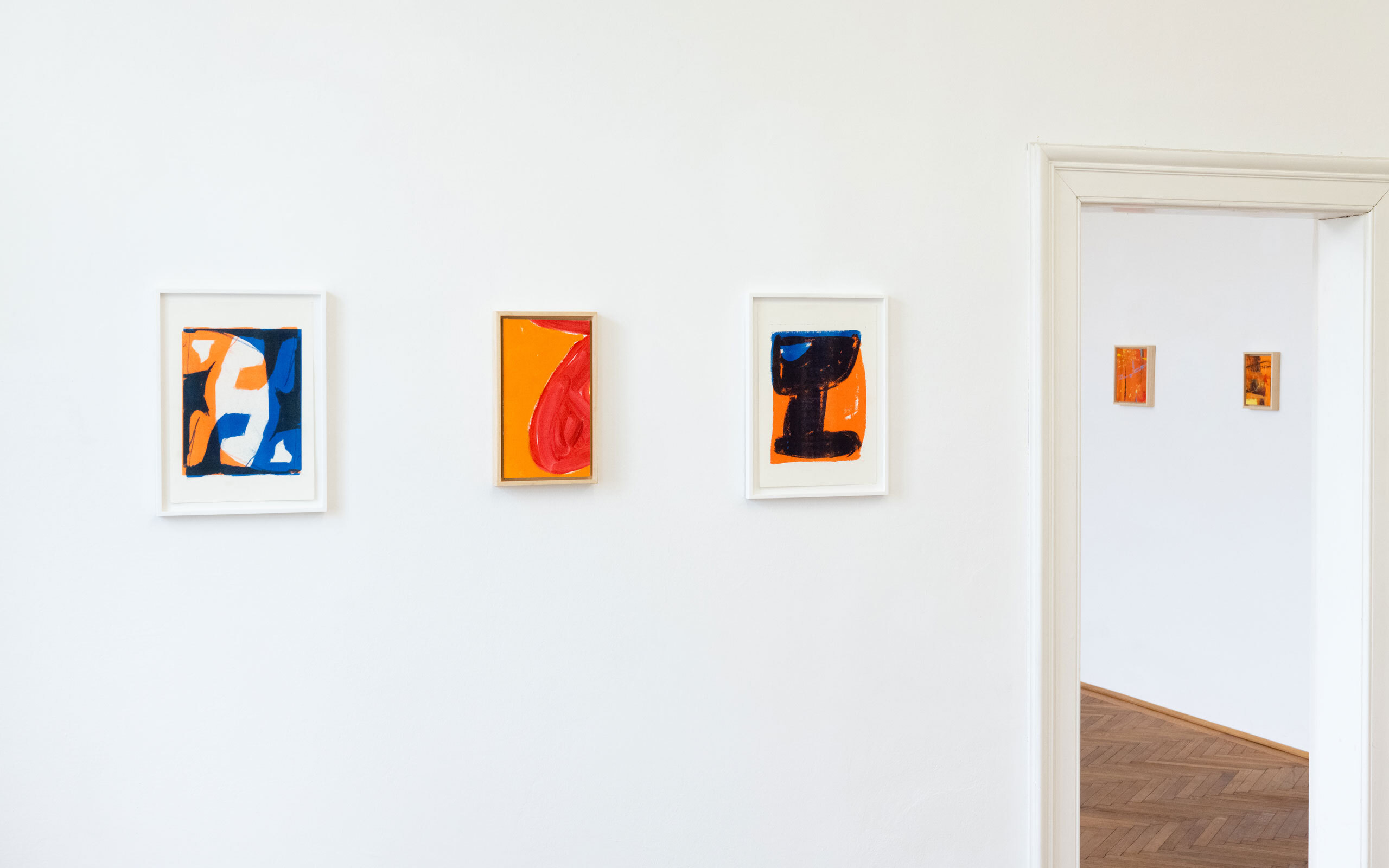
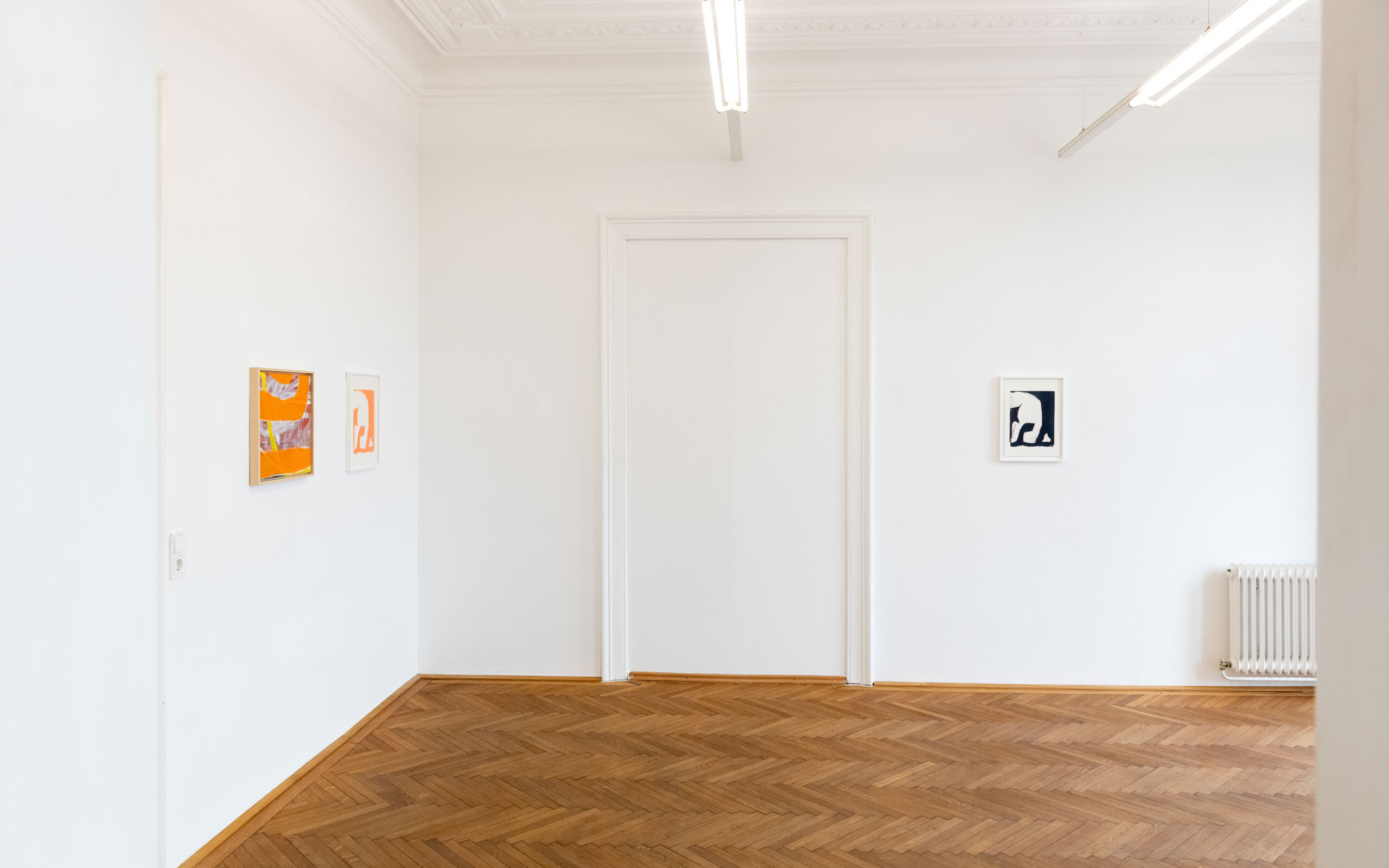
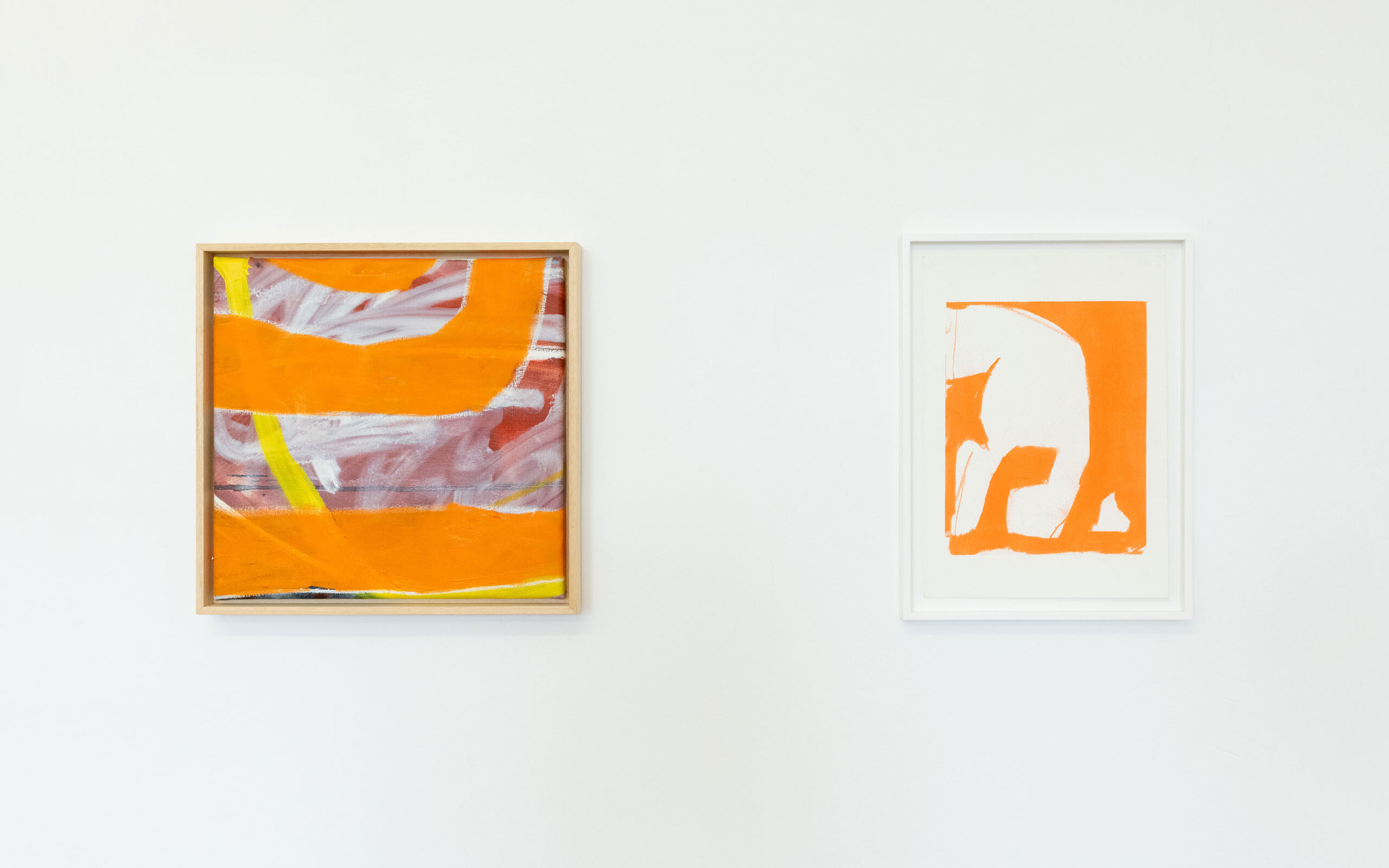
The process was developed by the Japanese company Riso, from where the process gets its name. The method allow Lukáč to repeatedly produce simple and contrastive forms and visual motifs that he varies and re-contextualizes throughout the series.
The depicted shapes seem to vaguely reminisce known abstract modernist forms such as the ones by Eduardo Chillida, but when asked to reveal their true nature they remain responsible only to themselves.
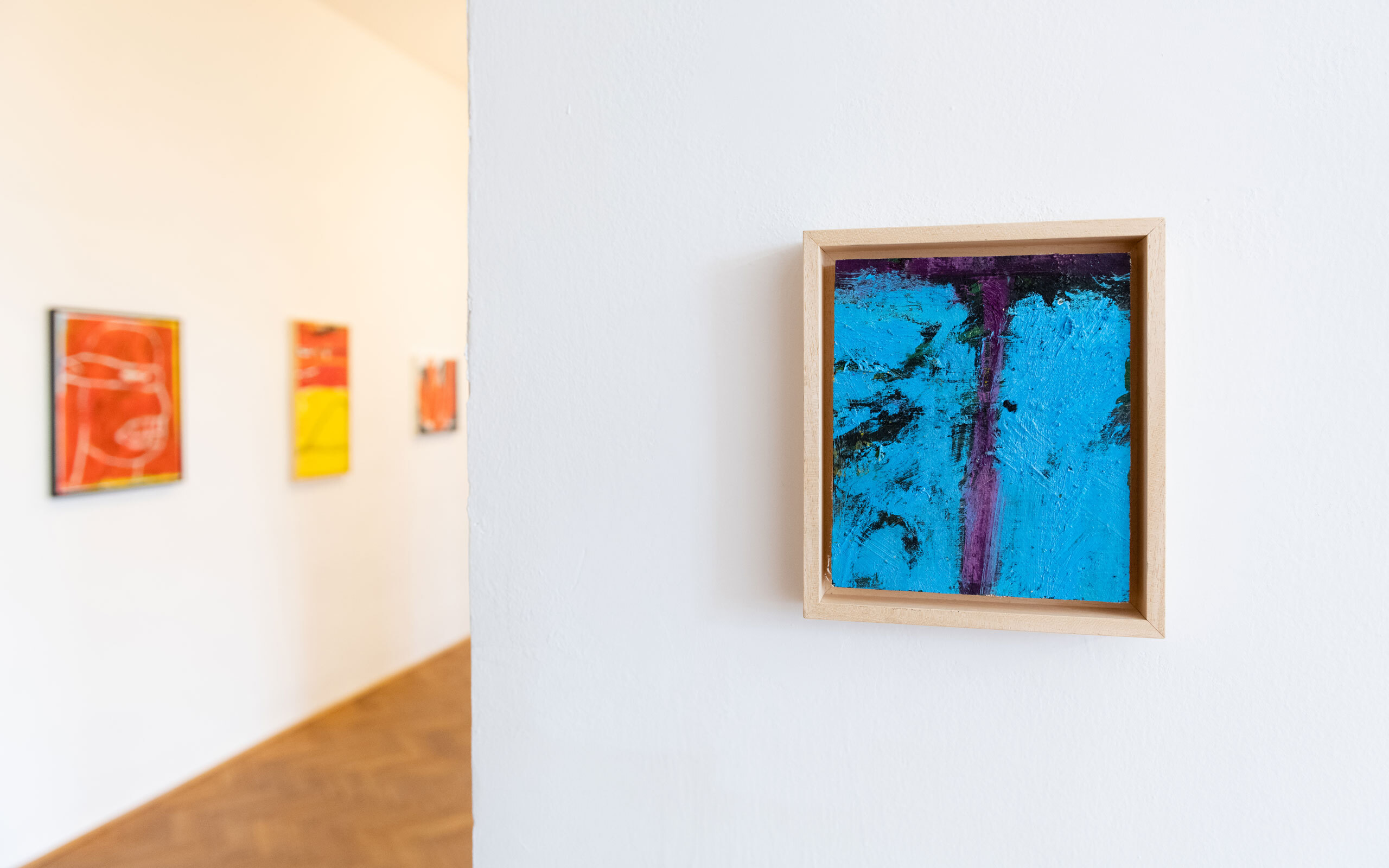
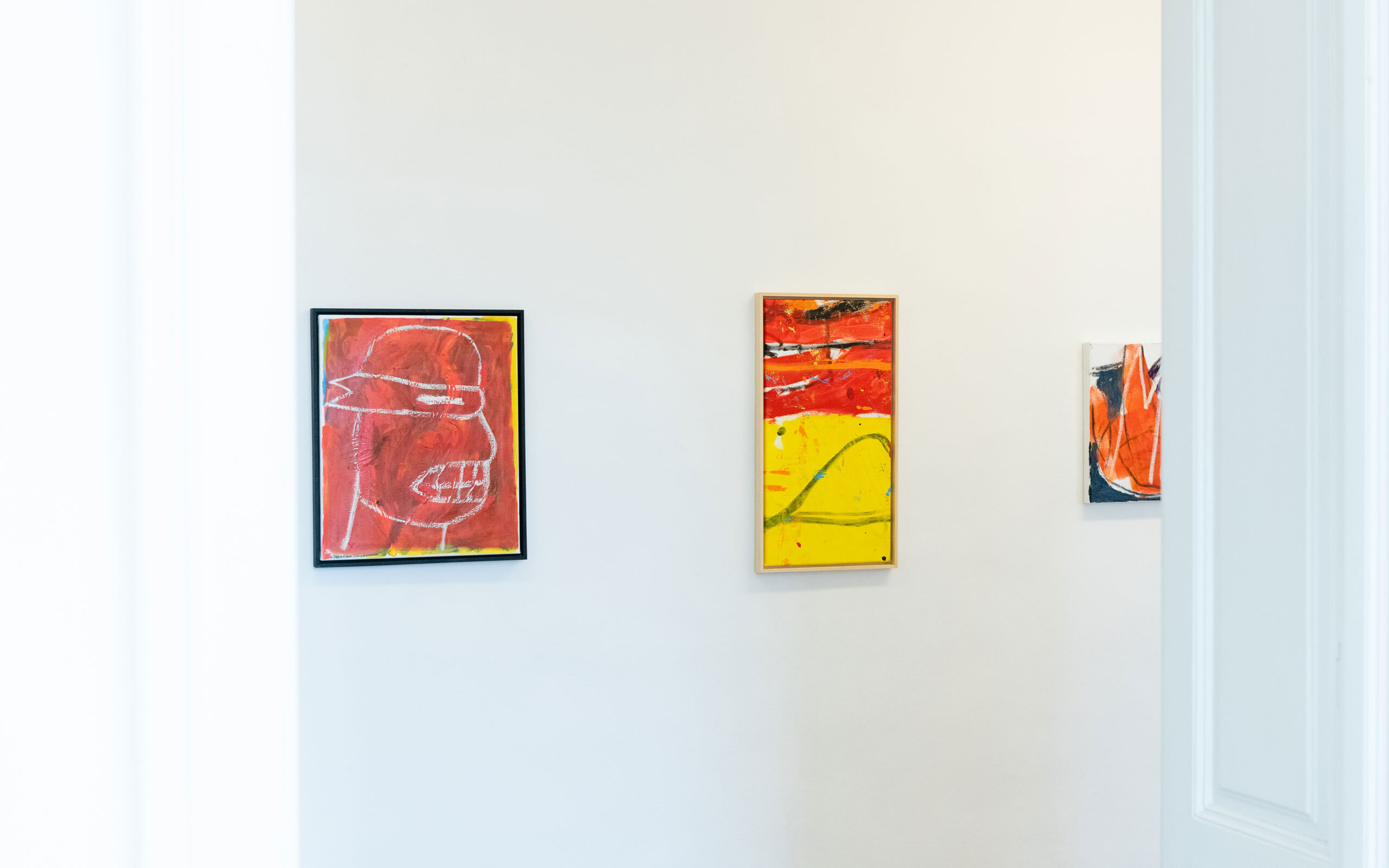
Representative of Martin Lukáč’s more figurative works the show features one of his “turtle paintings” that he has excessively varied in shape and color in a pop-cultural manner over the years since he started and showed them for the first time at Duve Berlin in 2019 in a show titled I’d rather be with you.
The Teenage Mutant Ninja Turtles are well-known icons of the cultural milieu of Lukáč’s generation which grew up during the complex years of Slovakia’s post-socialist transformation. In the 1990s, Lukáč and his peers became inundated by visual representations of these cultural heroes. They became a cultural article and were used in a wide spectrum of products, often imbued with many manufacture inaccuracies, discolorations, or other visual idiosyncrasies which differed from the prototypes.
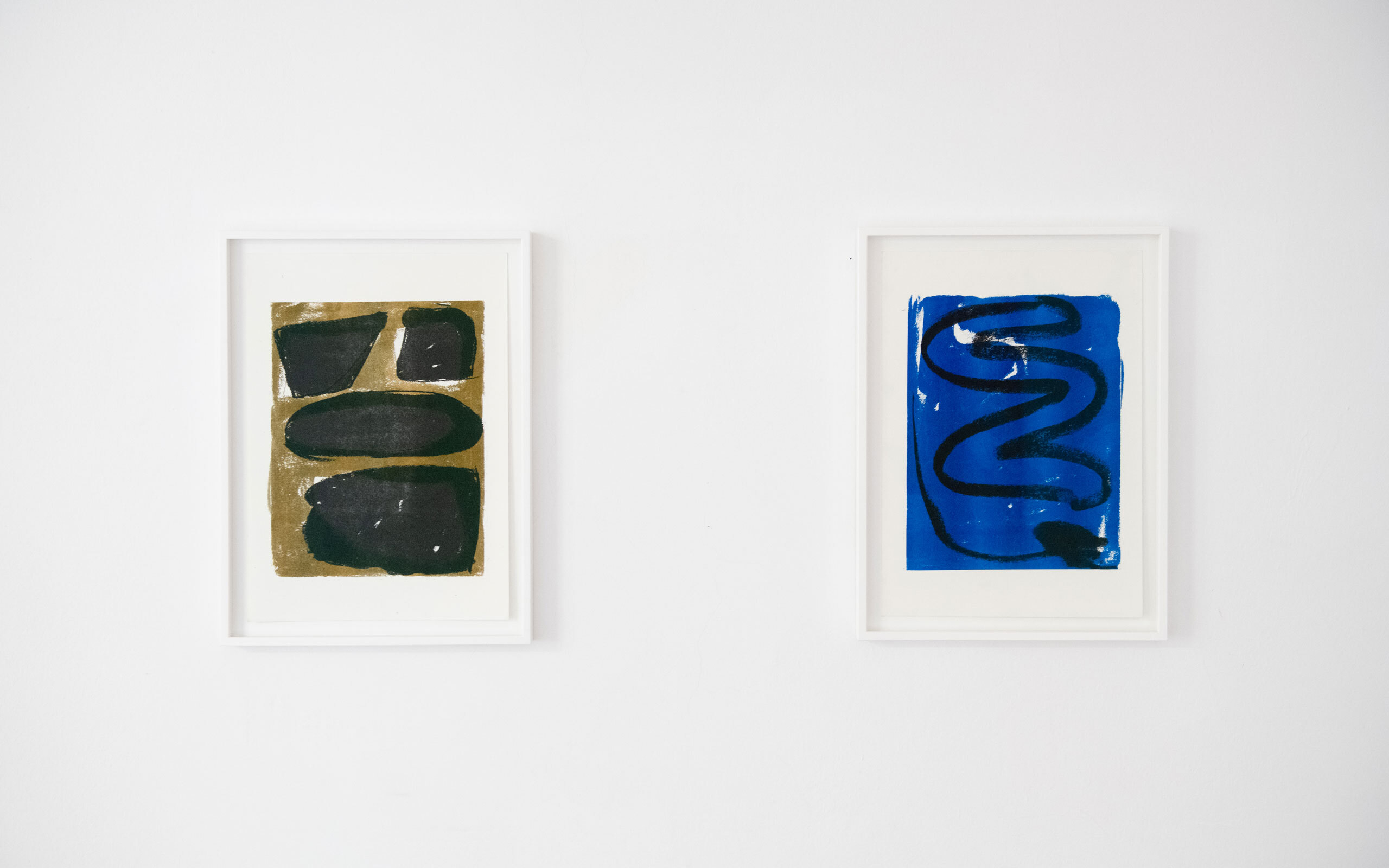
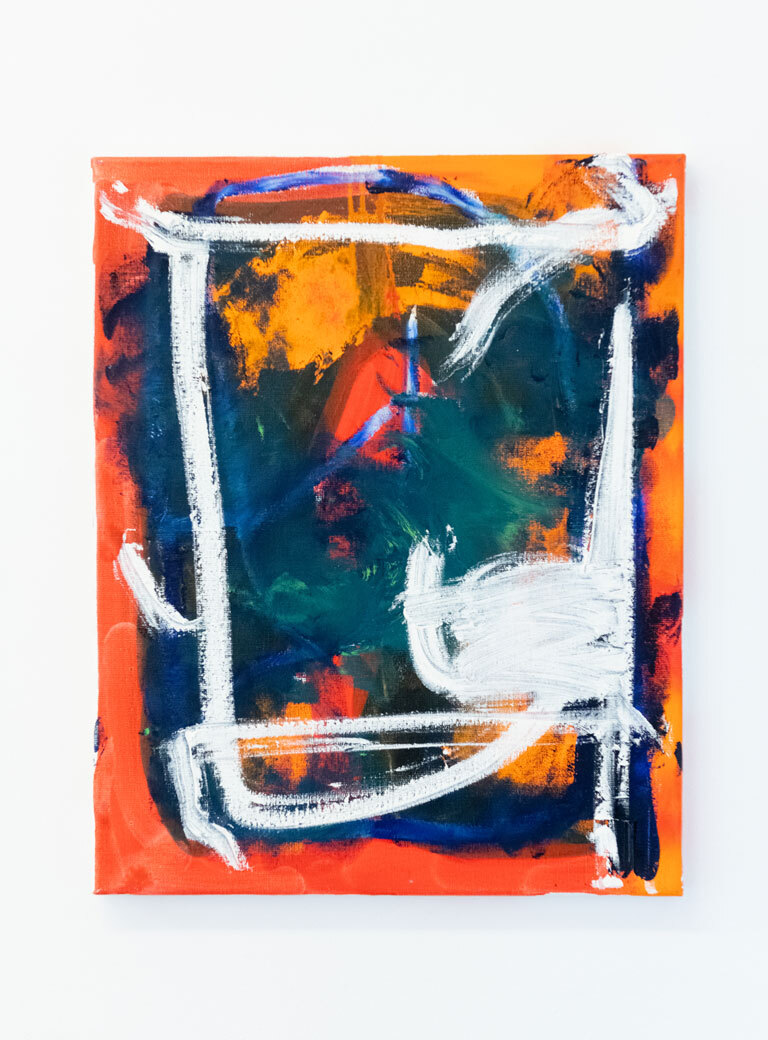
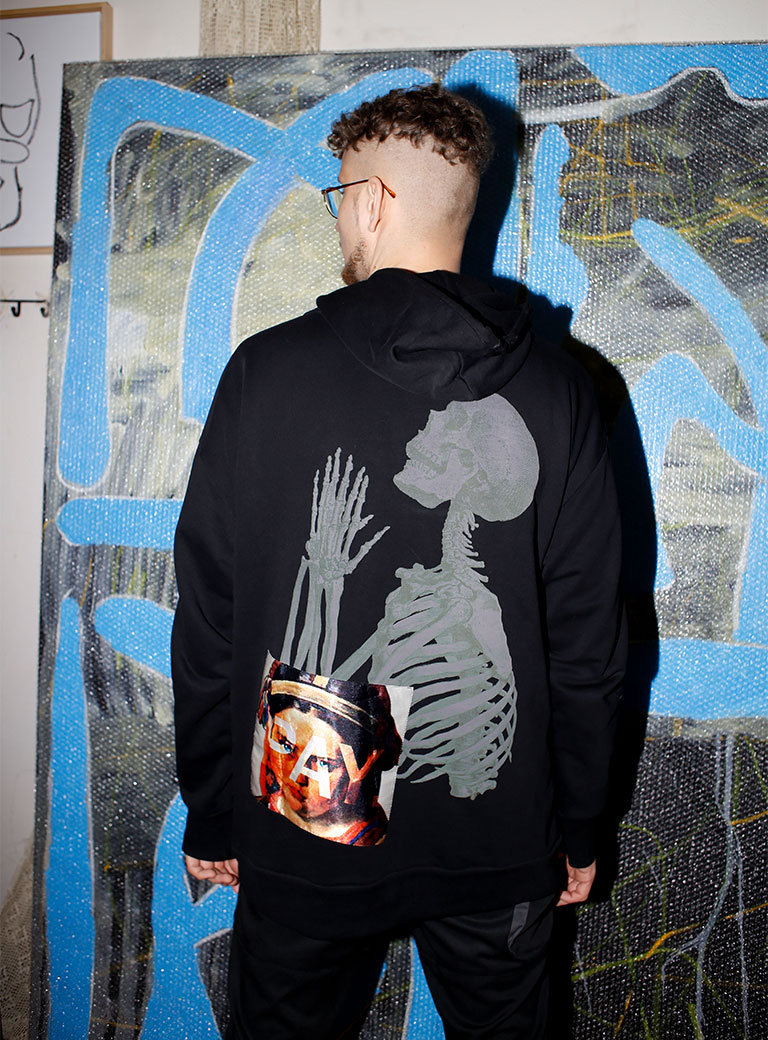
Text: written up by Florian Langhammer, based on adopted parts from texts by Chris Sharp, Peter Medyeši, Christina Gigliotti and František Fekete
Photos: Christoph Liebentritt


